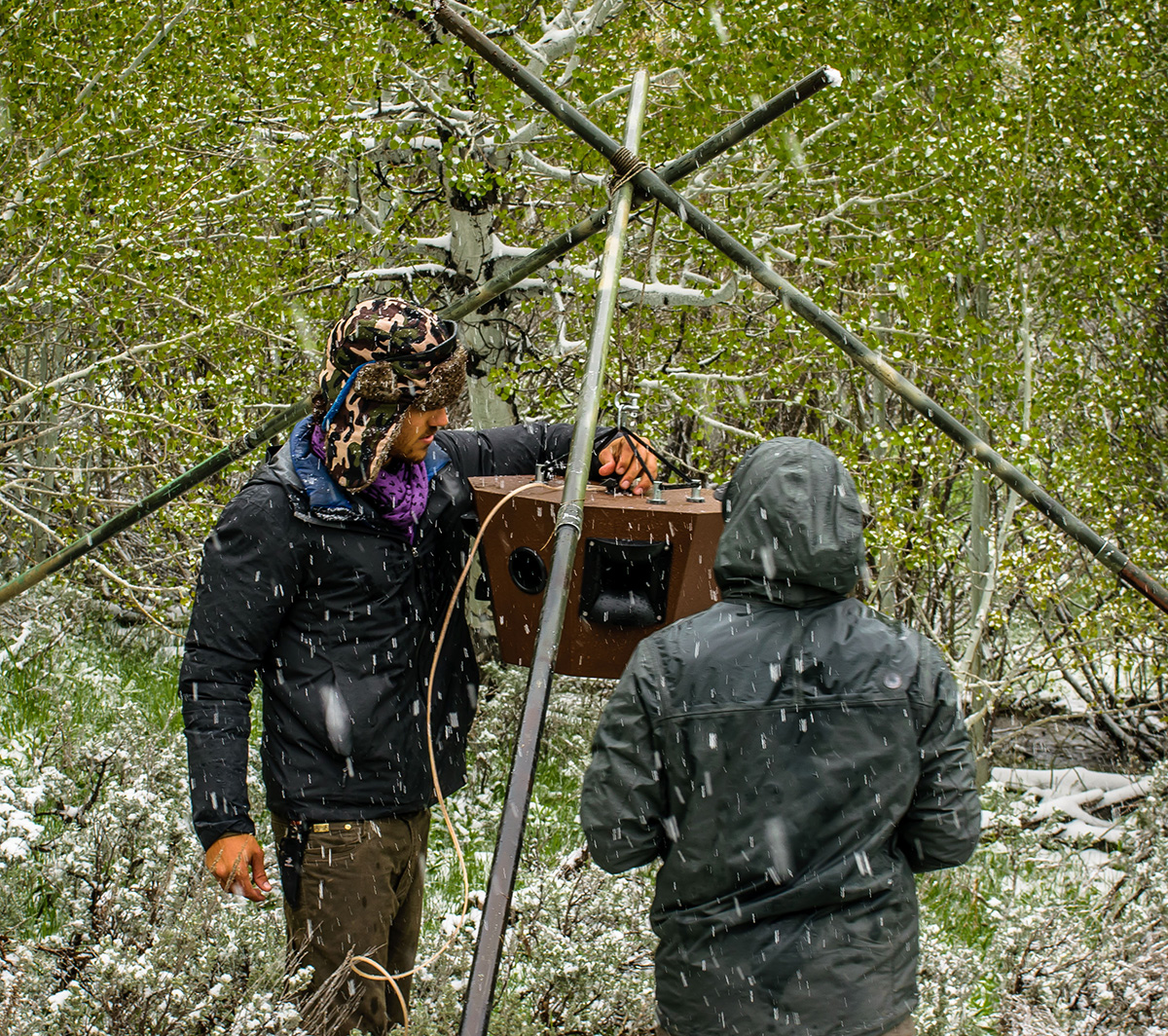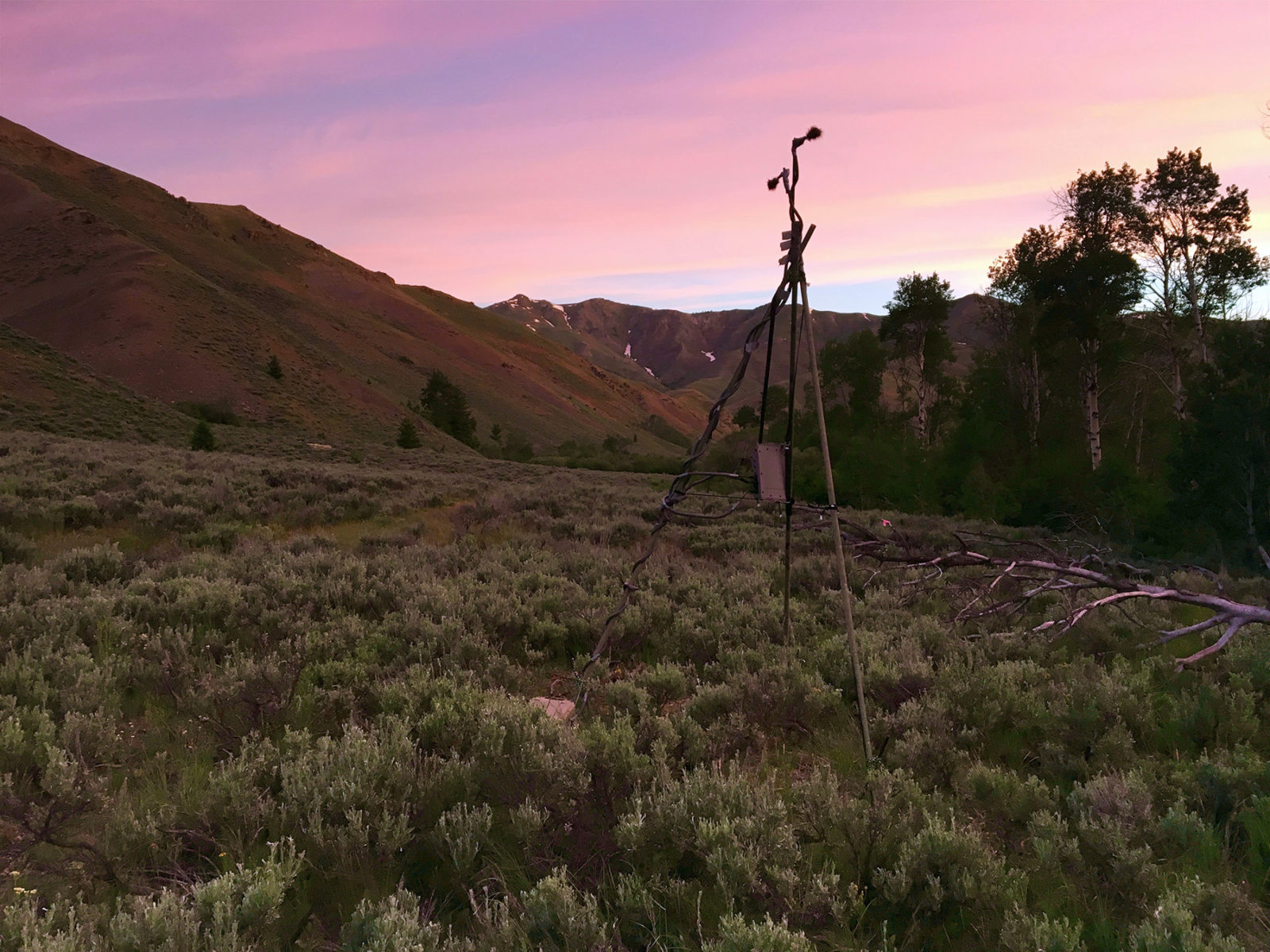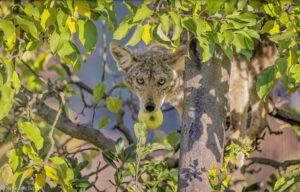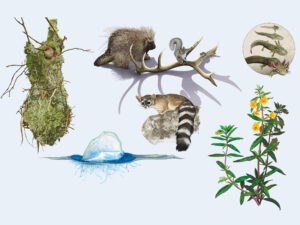I collect bird poop for my research. Finding poop makes me happy, because it means the birds are eating. And what I really want to know is what they’re eating. So after I’ve done my collecting I use DNA sequencing to reconstruct the diet of birds that live in differing noise conditions.
We know how noise affects people in the outdoors. I remember once crawling into a tent in a Death Valley campground, and spending the night listening to the sound of generators humming in the desert. Growing up in Mendocino County, I spent a lot of time climbing redwood trees and looking at tidepools. The natural sound of crashing waves and the quietness of the giant old-growth forests were essential qualities of my experience. I’m not alone; research shows that people tend to name natural sounds as particularly important to their enjoyment of the outdoors. Psychological and physiological health benefits, such as stress relief, have been linked to natural sound. When researchers expose test subjects to loud urban noise these benefits turn negative, and include increased stress levels, decreased learning and cognitive deficits.
What we don’t know nearly as much about is how human noise affects wildlife. I started trying to understand this a few years ago when I was at the Smithsonian Tropical Research Institute.
I started out studying a kind of frog-eating bat that uses the frog’s calls to find prey. With incredibly thin mist-nets, I caught wild bats from the jungles of Panama and brought them into a flight room. Then I played noise that was filtered in two ways. One noise type overlapped in frequency (or pitch) with the frog calls, while the other noise type was not the same pitch as the frog call. Our prediction was that only noise that overlaps with frog calls, will make it more difficult for bats to hunt. This is similar to what happens to humans at loud parties. Human voices overlap one another, and it is difficult to hear your neighbor.

I discovered that although the bats have a more difficult time finding prey in overlapping noise, they still do find the frogs. But they change the way they hunt, relying more on extremely high-pitch echolocation, and less on listening to the frog call. Since urban noise is more similar in pitch to frog calls than echolocation signals, the frog call is harder to hear in this noise than a bat’s echolocation signal. This is similar to how humans focus, visually, on the lips of someone talking at a loud party.
Researchers studying a population of white-crowned sparrows in the Presidio in San Francisco have found similar results. In one of the longest-studied evolutionary responses to urban noise, the birds seem to have shifted their song pitch upward in the last 30 years. This allows their songs to be perceived by mates amongst the lower-pitch sounds of the city. But it is unlikely that all animals are as adaptable.
Which birds and bats are as flexible as these two? What other animals are particularly affected by noise and who is not? How can we better predict this for untested species? The field is so new that these questions remain mostly unanswered.
As a graduate student at Boise State University in Idaho, I’m trying to answer some of these questions. Working now with the birds, I’m trying to understand how birds and insects will change in response to noise, and how changes to one group might cause a change in another. For example, if birds avoid noisy areas, do their insect prey multiply, and dominate a landscape?
We predict that in the DNA, we’ll see evidence of very different insect diets. Some insects may avoid noise, whereas others may be attracted to it. This means that different prey will be available to birds in noisy areas. Additionally, bird foraging behavior may be changing in noise. Is it more difficult to find sound-producing prey, like cicadas, in noise?
This may have important downstream implications for agriculture. If noise allows insect pollinators to thrive because it drives predators away, farmers may be able to use such sounds as tools in crop management. Conversely, perhaps noise scares away particular insect pests, which would be useful as well. However, we are far from any kind of management plan. Insects have almost entirely been ignored in the field of studying noise.
The field of wildlife noise research is expanding, and others are focusing on whale communication or fish foraging behavior near marine noise sources, such as shipping noise. Others still, focus on bird reproductive success, rodent foraging, or mongoose predator-vigilance near automobile traffic noise.
We still have much to learn. Basic things, such as measuring noise, are quite technical and often done poorly. Most people measure noise amplitude (measured in decibels), but there are multiple dimensions beyond amplitude, such as pitch and timing. Traffic noise, for example, can be more intermittent and of lower pitch, or more constant and higher pitch depending on traffic flows, vehicle speed, and type of road. It is still not understood how these different characteristics of noise might affect wildlife – essential information if we hope to mitigate its harm.
Fortunately, noise pollution can be tackled more easily than most types of pollutants. Regulating traffic flows, adding noise barriers, and reducing speed limits can help in wild spaces that border urban environments. Muir Woods has posted quiet zone notices to encourage hikers to keep the volume down in the National Monument. Similarly, the national authority of all non-military aviation, the Federal Aviation Administration, has recently begun requiring jets to now follow roadways while they are flying over Rocky Mountain National Park in Colorado, reducing the noise you will hear on the park’s trails.
There are also simpler, daily changes to our lifestyles that help, such as biking to work more often, quieting barking dogs, and turning down the volume on outdoor music. Lowering noise levels around our homes will certainly benefit wildlife, but it will also aid in maintaining our own health and psychological well-being.





